
Moissanita vs Diamantes: ¿Cuáles son las diferencias?
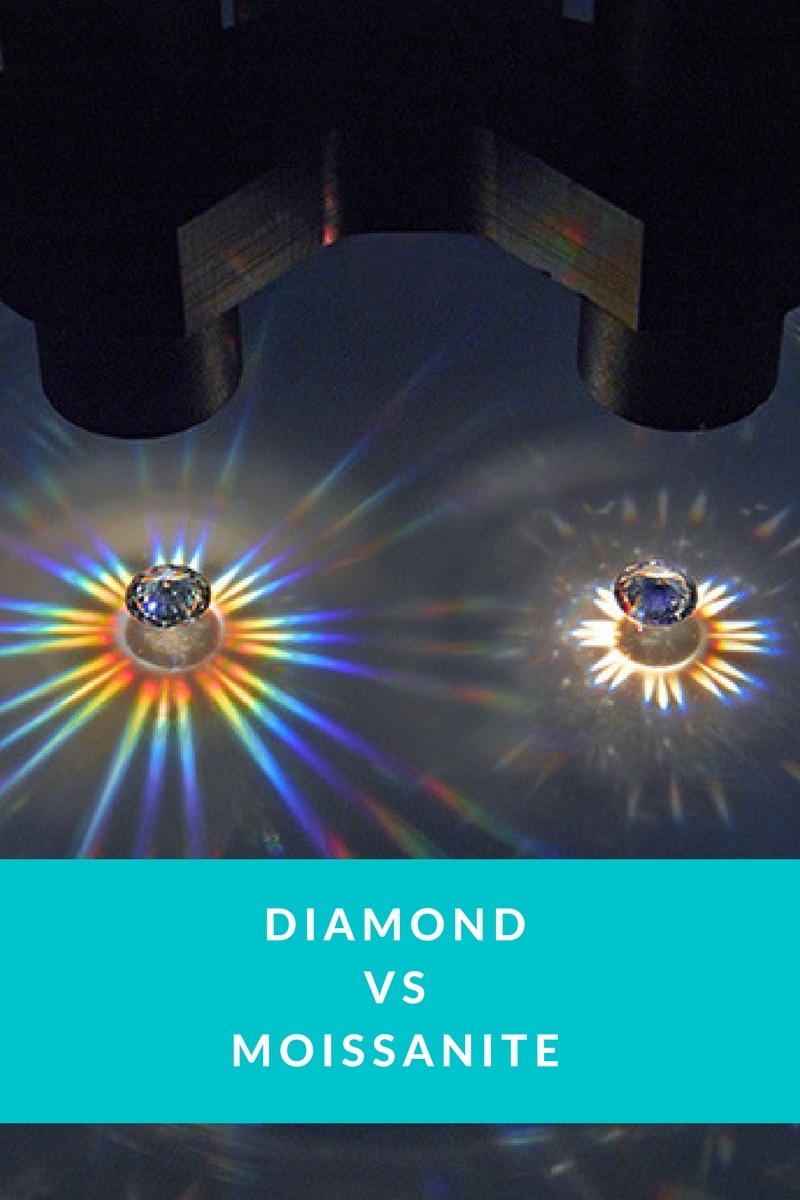
Los diamantes han sido un elemento básico de los anillos de compromiso durante décadas, pero alternativas como la moissanita han ganado popularidad. Ya sea por precio, ética o simplemente por romper con lo establecido, muchos recién casados se atreven a optar por un anillo de compromiso de moissanita poco convencional.
Pero espera, ¿qué es la moissanita?
La moissanita es una gema transparente e incolora hecha de carburo de silicio que llegó a la Tierra mediante un meteorito hace siglos. Por ello, las piedras naturales son increíblemente escasas, por lo que casi todas las moissanitas del mercado son sintéticas.
¿Por qué la gente elige anillos de compromiso de moissanita? La razón principal es su similitud con el diamante , a un precio mucho menor. De hecho, la primera moissanita sintética, fabricada en 1891, se creó por accidente al intentar crear un diamante sintético.
La gran pregunta es: ¿es la moissanita tan buena como un diamante? Esa es la respuesta que daremos hoy, analizando la moissanita frente al diamante en términos de resistencia, belleza, rango de precio y abastecimiento ético.
Pero primero, hagamos un repaso de las piedras preciosas “sintéticas”.
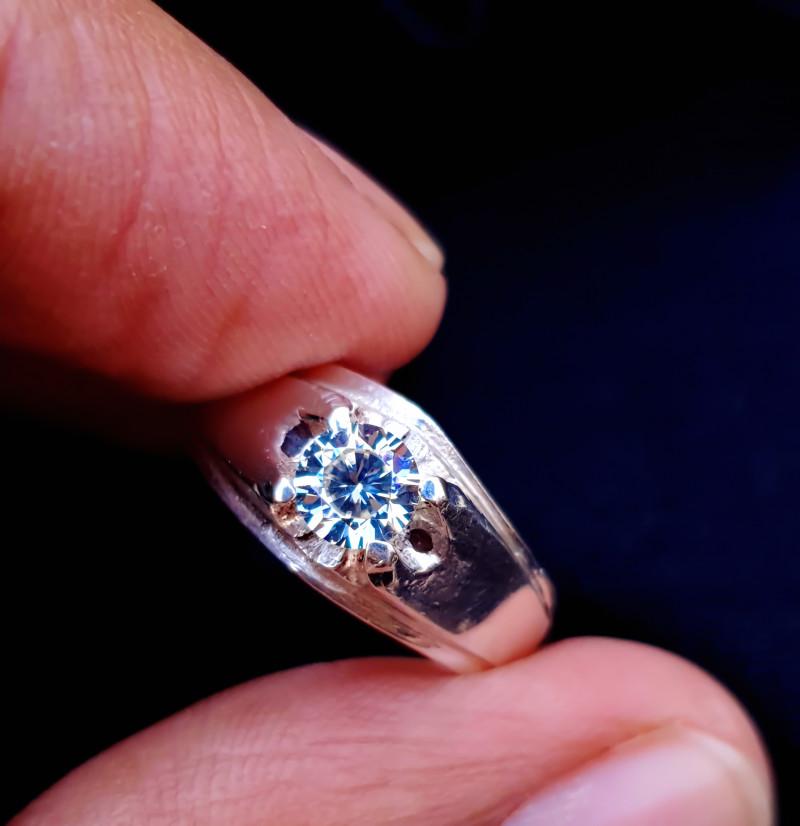
¿Qué es una piedra preciosa sintética?
Términos como “sintético”, “falso” o “simulante” se refieren a piedras preciosas que no se forman naturalmente, pero estos términos no son sinónimos.
Las piedras preciosas sintéticas , como los diamantes sintéticos o las moissanitas sintéticas, se crean en laboratorio. Tienen la misma composición química y propiedades que sus contrapartes naturales, pero su proceso de creación es más corto. Otros términos para "sintético" incluyen:
Artificial
Cultivado en laboratorio
Creado
Artificial
Las gemas simuladas o de imitación no tienen las mismas propiedades que las gemas naturales que imitan. La circonita cúbica y la moissanita pueden ser imitadoras de diamantes, ya que se parecen a los diamantes naturales, pero difieren en su composición química.
Ahora que ya hemos dejado eso de lado, ¡pasemos a las comparaciones!
Resistencia de la moissanita frente a la del diamante
Quieres que tu anillo de bodas dure hasta que la muerte los separe... o idealmente, más tiempo como reliquia familiar. ¡Por eso la durabilidad es clave! La durabilidad es una combinación de dureza, tenacidad, exfoliación y estabilidad de la piedra preciosa.
La dureza es una medida relativa de la resistencia de una gema a los arañazos. Quizás sepas que el diamante es la gema más dura del mundo, pero ¿conoces la segunda gema más dura? ¡Es la moissanita!
Con una dureza de entre 9,25 y 9,5 en la escala de dureza mineral de Mohs , la resistencia al rayado de la moissanita se acerca más a la del diamante (10).
Además de los arañazos, también hay que preocuparse por las astillas y las roturas. Ahí es donde entran en juego la tenacidad y la resistencia .
La tenacidad (o dureza) es la resistencia de una piedra a romperse o astillarse. La exfoliación describe la facilidad con la que una gema se parte a lo largo de ciertos ejes.
Los diamantes tienen una tenacidad frágil y una exfoliación perfecta (el tipo más fácil de partir) en cuatro direcciones, lo que significa que si se golpea en cualquiera de estos cuatro ángulos, la piedra se rompería .
Por otro lado, la moissanita es mucho más resistente que el diamante, con una exfoliación indistinta (un tipo de diamante más difícil de dividir) en una sola dirección. Por lo tanto, la moissanita es menos propensa a romperse que el diamante.
Por último, tenemos la estabilidad, que abarca las condiciones o sustancias químicas que podrían dañar una piedra. Las moissanitas son extremadamente resistentes al calor y requieren temperaturas mucho más altas para vaporizarse que los diamantes.
Los cambios repentinos e intensos de temperatura pueden fracturar los diamantes, pero no la moissanita. Ninguna de estas piedras reacciona negativamente a ningún producto químico.
El impacto del corte en la durabilidad
El corte de una piedra preciosa también puede afectar su vulnerabilidad a los daños. Las formas facetadas con bordes afilados y puntiagudos pueden astillarse con un golpe fuerte. Las formas comunes en esta categoría son pera, princesa, trillón y marquesa, pero las formas de fantasía personalizadas con bordes puntiagudos pueden ser igual de vulnerables.
Las formas con bordes redondeados y sin esquinas (redondas, ovaladas, acolchadas) son menos propensas a astillarse. Las formas redondas son las más duraderas; además, son las más comunes, ofreciendo una amplia variedad para elegir.
Digamos que te has propuesto un anillo de corte princesa. Aun así, puedes optar por este corte vulnerable y protegerlo de daños con el engaste protector adecuado.
Los engastes de bisel, de 6 puntas o de garra son los más seguros para el diamante o la moissanita. La moissanita soporta mayor presión que el diamante, por lo que los engastes de tensión son seguros para la moissanita, pero no para los diamantes.
¡Por supuesto, el corte también afecta la apariencia general, lo que nos lleva a nuestro próximo análisis!
Moissanita vs. Diamante: Comparación de apariencia
Una ventaja de las gemas sintéticas es un mayor control sobre su apariencia. Sin embargo, algunas características están determinadas por la composición de la piedra.
El primer rasgo que veremos es el color.
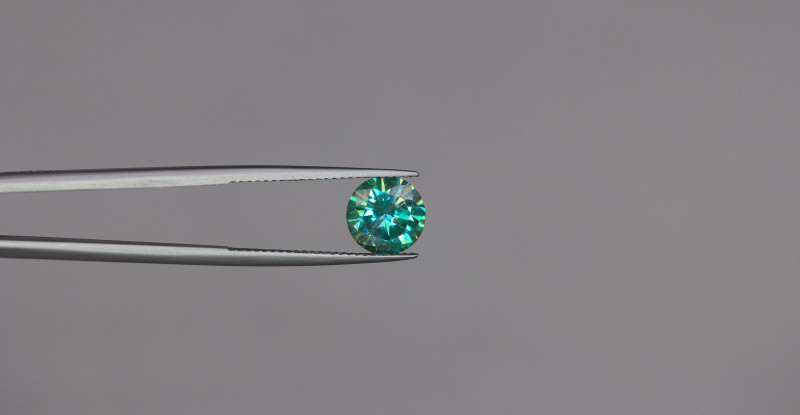 Imagen: moissanita sintética verde
Imagen: moissanita sintética verde
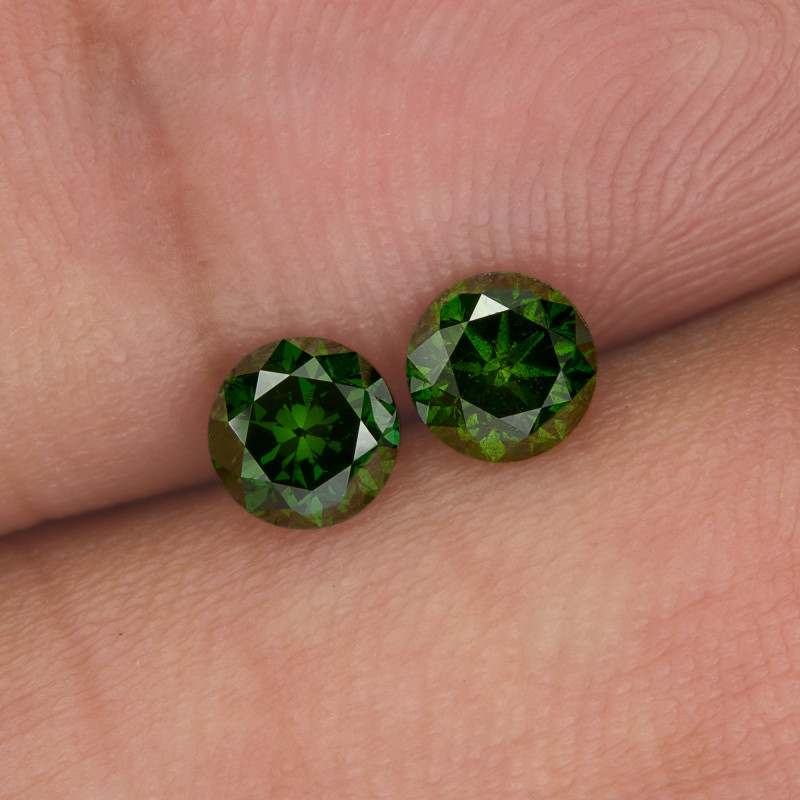 Imagen: diamantes de color verde intenso
Imagen: diamantes de color verde intenso
Color
Tanto la moissanita como el diamante son tradicionalmente incoloros. Ambos suelen tener matices entre amarillos y marrones. Los tratamientos pueden eliminar estos matices si son demasiado evidentes.
Algunos compradores comentan que su moissanita "incolora" se ve ligeramente verde o azul con luz natural. Recomendamos siempre observar la piedra bajo diferentes tipos de iluminación antes de comprarla.
¿Prefieres un anillo de compromiso con piedras preciosas de colores ? Los diamantes vienen en numerosos tonos, algunos producidos mediante tratamientos. Los tratamientos de moissanita pueden producir tonos como dorado, azul, verde o rosa, por nombrar algunos.
Los diamantes de color, tratados o sin tratar, costarán mucho más que las moissanitas de color. Aun así, los diamantes o moissanitas más incoloros tendrán el mayor valor.
Claridad
La claridad de una piedra preciosa mide la abundancia y visibilidad de sus inclusiones . La claridad de la moissanita se basa en los grados de claridad del diamante. Cada grado, desde FL (sin defectos) hasta I3 (con inclusiones), influye significativamente en el precio.
El proceso de producción de moissanita sintética ha mejorado con el tiempo, por lo que la mayoría de las moissanitas del mercado presentan una claridad excelente. Los diamantes naturales con mayor claridad son más raros y mucho más caros.
¿Se enturbia la moissanita con el tiempo? ¡No! Cualquier enturbiamiento que aparezca se puede solucionar con una limpieza.
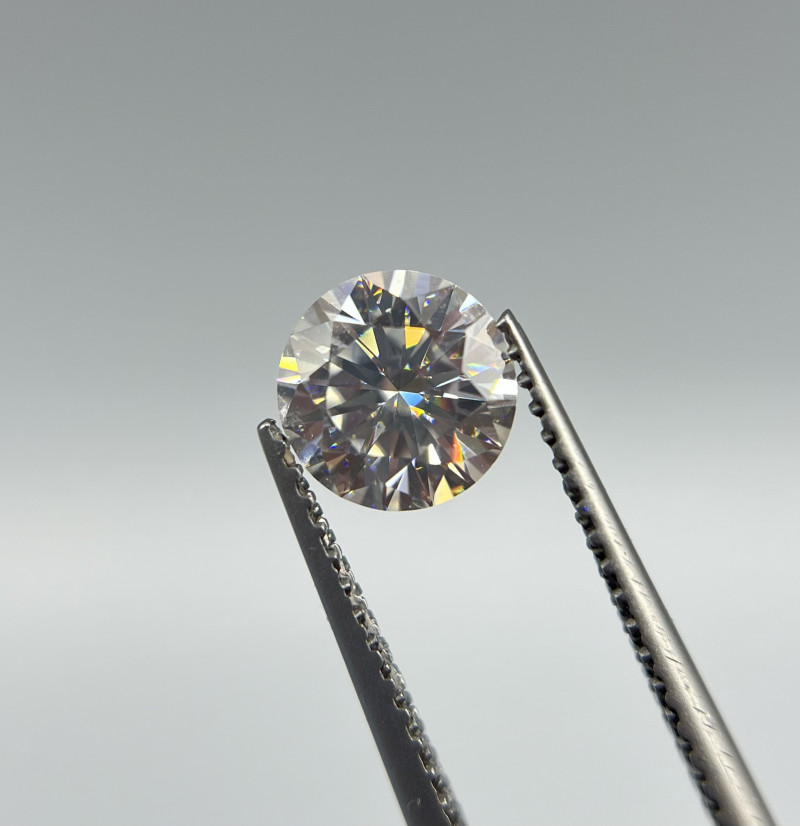 Imagen: piedra preciosa de moissanita blanca
Imagen: piedra preciosa de moissanita blanca
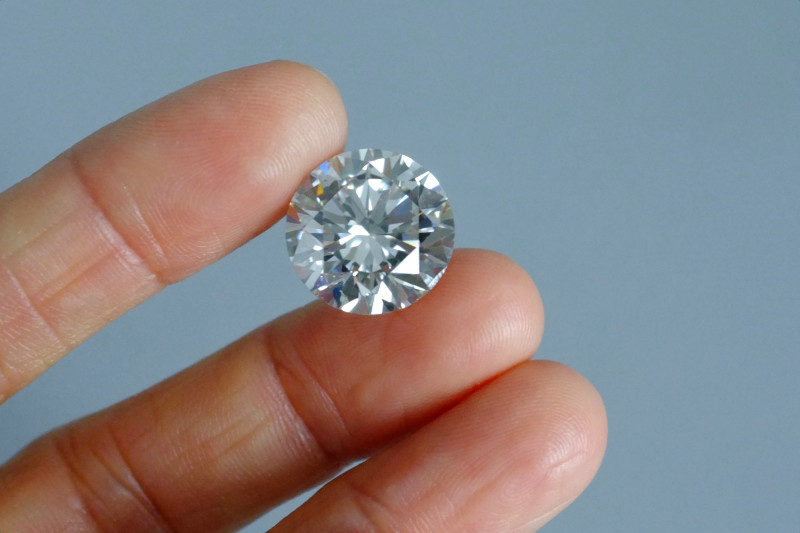 Imagen: piedra preciosa de diamante blanco
Imagen: piedra preciosa de diamante blanco
Brillo y fuego (chispa)
¿A quién no le encanta admirar el brillo de un anillo de compromiso? El corte correcto es un factor para un brillo mayor (el brillante redondo es el mejor), pero la dispersión y el brillo de la piedra afectan su potencial.
La dispersión , o fuego, describe la cantidad de luz de colores que refleja una gema. El fuego del diamante es de 0,044, mientras que el de la moissanita es de 0,104, ¡ más del doble del fuego del diamante !
A continuación, tenemos el brillo: la luz blanca reflejada desde el interior de la piedra, medida mediante el índice de refracción. Un índice de refracción más alto equivale a un brillo más alto.
El índice de refracción de la moissanita es de 2,59-2,69, mientras que el del diamante es de 2,41-2,42. La diferencia es mínima, pero aun así significa que la moissanita tiene un 10 % más de brillo que el diamante .
Otra propiedad que vale la pena mencionar es la birrefringencia , que se presenta en gemas con múltiples índices de refracción. La birrefringencia, o doble refracción, se produce cuando múltiples rayos de luz se reflejan en diferentes direcciones. Esta característica permite que las piedras sean pleocroicas, mostrando diferentes colores desde distintos ángulos de observación.
Los diamantes no son birrefringentes (doblemente refractivos), pero las moissanitas sí lo son. La birrefringencia de la moissanita es de 0,043.
En resumen, la moissanita tiene mayor fuego, brillo y birrefringencia que el diamante.
Quizás conozca las 4 C de la calidad del diamante (color, talla, claridad y peso en quilates), y ya hemos hablado de algunas. A continuación, hablaremos de lo que muchos llaman la 5.ª C: el costo.
 Imagen: anillo de moissanita azul roto con circonita cúbica
Imagen: anillo de moissanita azul roto con circonita cúbica
Precio de la moissanita frente al precio del diamante
En primer lugar, ¿vale más el diamante que la moissanita? Sí, los diamantes se venden más caros que la moissanita.
Pero ¿cuánto más barata es la moissanita que el diamante? En promedio, el precio de la moissanita es aproximadamente el 10 % del precio del diamante, a igualdad de condiciones. Dicho esto, analicemos estos factores para ver las cifras reales.
En cuanto al peso en quilates, las moissanitas más grandes tienen un precio significativamente menor que los diamantes grandes. Un diamante redondo brillante con buena claridad y un color decente puede costar entre $7,000 y $51,000 por quilate, aunque la mayoría ronda los $26,000. Por otro lado, una moissanita de 3 quilates con las mismas características ronda los $3,000.
Aun así, a la mayoría de las parejas les gustan los anillos de compromiso de 1 quilate. Un diamante de 1 quilate, casi incoloro, de talla redonda y con buena claridad suele costar $5,000, pero puede llegar a costar entre $1,800 y $25,000. Una moissanita de 1 quilate con las mismas características suele costar $300, pero puede llegar a costar entre $450 y $600.
Un anillo de compromiso de moissanita de 1 quilate con oro blanco y una piedra de corte redondo con claridad VS1 a VS2 suele costar alrededor de $1400.
Nota importante : La moissanita es menos densa que el diamante, por lo que será más pequeña (en mm) que un diamante del mismo peso en quilates. Por ello, algunos vendedores clasifican la moissanita por tamaño en lugar de por peso.
Otra nota importante es que la moissanita no es la alternativa más económica al diamante. Por ejemplo, las piedras de circonita cúbica de 1 quilate cuestan solo $20, aunque la circonita cúbica no tiene el brillo ni la durabilidad de la moissanita.
Eso cubre la “5ª C” del Costo, pero hay una 6ª C que se ha vuelto más importante que nunca: Conciencia o “Libre de Conflictos”.
 Imagen: diamante en bruto
Imagen: diamante en bruto
Preocupaciones éticas y sostenibilidad
Hace décadas, pocas personas se preguntaban de dónde provenían sus diamantes. Eso cambió tras la serie documental de 2006, Diamantes de Sangre , y el problema de los diamantes de zonas en conflicto se hizo público.
Los diamantes de conflicto, o "diamantes de sangre", provienen de zonas devastadas por la guerra y se venden para financiar a las milicias rebeldes que intentan derrocar gobiernos. Problemas humanitarios como el trabajo forzoso, los niños soldados y la pérdida de vidas están vinculados a estos diamantes.
Las Naciones Unidas establecieron el Proceso de Kimberley en 2003 para abordar el problema de los diamantes en conflicto mediante una mayor supervisión y transparencia sobre el recorrido del diamante desde la mina hasta el mercado.
Las naciones que participan en el Proceso de Kimberley deben cumplir criterios éticos de abastecimiento para la importación y exportación de diamantes, resumidos en la Certificación del Proceso de Kimberley del diamante.
Para hacer su parte y terminar con el comercio de diamantes en conflicto, al elegir diamantes, busque siempre una Certificación del Proceso de Kimberley, además de registros sobre las prácticas laborales de la mina, el proceso de la cadena de suministro y los esfuerzos de sostenibilidad.
¡Otra forma de aportar tu granito de arena es optar por una piedra sintética!
¿Son las piedras sintéticas más éticas?
Lamentablemente, incluso las minas con los procesos laborales más éticos siguen teniendo un impacto negativo en el medio ambiente y sus alrededores. Las gemas sintéticas tienen un impacto ambiental significativamente menor.
Las piedras preciosas sintéticas eliminan problemas como la contaminación del agua, la polución y la destrucción del ecosistema asociados con la minería.
Sin embargo, el problema potencial de sostenibilidad con la creación de piedras preciosas sintéticas es la emisión de energía.
Los laboratorios cultivan gemas en cuestión de semanas o meses, mucho más rápido que los millones de años que tarda el crecimiento natural de los diamantes. Sin embargo, las máquinas utilizadas requieren energía las 24 horas del día, los 7 días de la semana, por lo que el tipo de energía utilizada puede influir en la sostenibilidad.
El uso de energías renovables inclina la balanza de la sostenibilidad a favor de un laboratorio. Sin embargo, los laboratorios que utilizan combustibles fósiles pueden emitir emisiones perjudiciales de dióxido de carbono.
Sin embargo, las emisiones del laboratorio todavía son 5,5 veces menores que las producidas incluso por las minas de diamantes más conscientes del medio ambiente, según una comparación de Stanford de 2020 .
La opción con menor impacto ambiental son las piedras vintage o de herencia. Si esto no es posible, las moissanitas sintéticas siguen siendo significativamente más éticas y sostenibles que los diamantes extraídos.
En el lado más metafórico, ¿qué significa cada anillo?
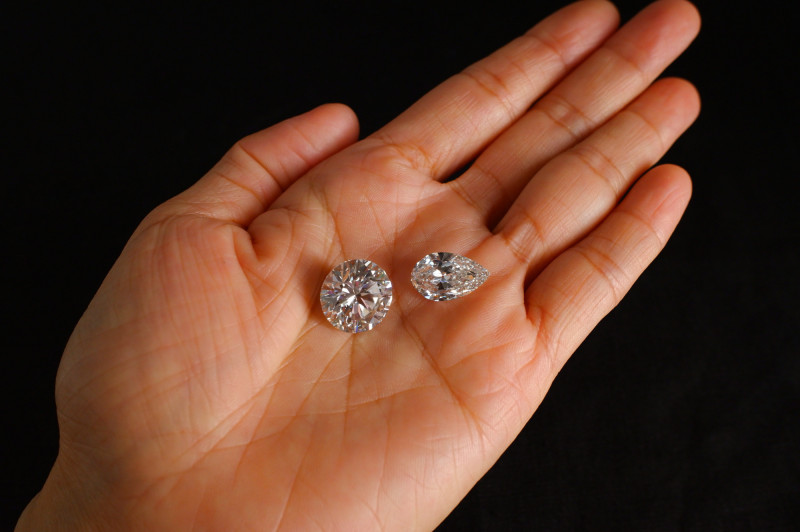 Imagen: piedras preciosas de diamante
Imagen: piedras preciosas de diamante
Significado de los anillos de diamantes y moissanitas
El nombre «diamante» proviene del griego adamas , que significa «irrompible». Esta cualidad es tanto literal como figurativa, ya que los diamantes representan un amor comprometido y duradero.
¿Qué significa la moissanita? Los anillos de moissanita también representan un amor inquebrantable, pero también brindan confianza, suerte y prosperidad. Se dice que ayudan a romper con la rutina, ¡lo que los hace perfectos para cualquier pareja aventurera!
En términos de estatus, los diamantes siguen siendo los máximos símbolos de lujo y prestigio. Esto probablemente no cambie, aunque la importancia del estatus parece estar cambiando para algunos. Además, la "tradición" de los diamantes en anillos de compromiso y la falsa idea de su extrema rareza datan de la década de 1940.
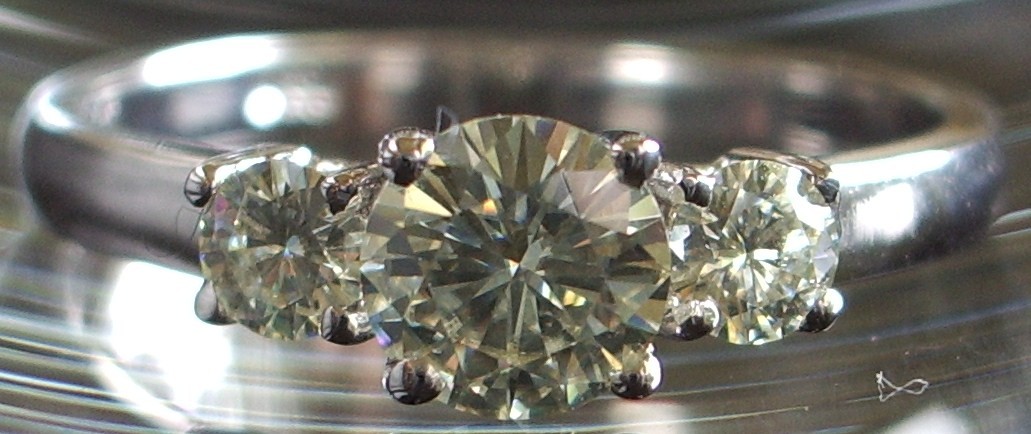
Todo considerado: ¿Vale la pena comprar moissanita?
Como pieza clave de su anillo de compromiso, la piedra preciosa adecuada marca la diferencia. Dada su extrema durabilidad, su hermosa apariencia y su cuidadosa elaboración, ¡la moissanita es sin duda una excelente opción!
Por supuesto, la mejor opción depende de tus prioridades. ¿Buscas una piedra natural? El diamante (o alternativas como la morganita) podría ser tu mejor opción. Si buscas el mejor brillo por tu dinero, la moissanita es la mejor opción.
¿No te decides? Siempre puedes conseguir un anillo de compromiso de moissanita y diamantes, o un anillo de diamantes con una alianza de moissanita. Sea cual sea tu elección, investiga siempre la piedra, el vendedor y el proveedor para comprar con confianza.
¿Aún no lo tienes claro? ¡Explora nuestras colecciones de moissanita y diamantes y descubre cuál te encantará!
Buscar en el Gemstone Encyclopedia
Subastas relacionadas
Artículos relacionados
Los intensos tonos canela de la hessonita se complementan con su energía cálida y relajante. Descubre el significado, la historia y los secretos del granate canela en nuestra Guía de la Hessonita.
19th Jun 2018
Las antigüedades solían ser el artículo predilecto para inversión a largo plazo, pero con el tiempo su valor ha disminuido. Las piedras preciosas, en cambio, han seguido revalorizándose.
9th May 2018
Con el Día de la Madre el domingo 14 de mayo, es el momento perfecto para encontrar el regalo perfecto para este año. Gem Rock Auctions ofrece una gama de hermosas joyas, como anillos, colgantes, aretes y pulseras.
9th May 2018
últimos artículos
Las tallas de marfil de palma, también llamadas marfil vegetal, son una alternativa natural al marfil de elefante, extraído éticamente de la nuez de palma de la palmera sudamericana Phytelephas. ¡Aprenda todo sobre el marfil de palma en esta guía!
15th Jan 2026
Las piedras de flores de crisantemo son maravillas naturales que presentan un patrón floral de calcita blanca, celestita o andalucita sobre piedra caliza negra o lutita.
13th Jan 2026
La piedra solar reticulada arcoíris es una variedad de feldespato con tres magníficos efectos ópticos causados por la presencia de diversas inclusiones. Su vibrante colorido y su patrón reticular la convierten en una rara joya de colección.
12th Jan 2026
Categorías de artículos
How To's is where you will find helpful articles from gem Rock Auctions on how to cut gemstones, select gemstones and buy gemstones.
9 Artículos





